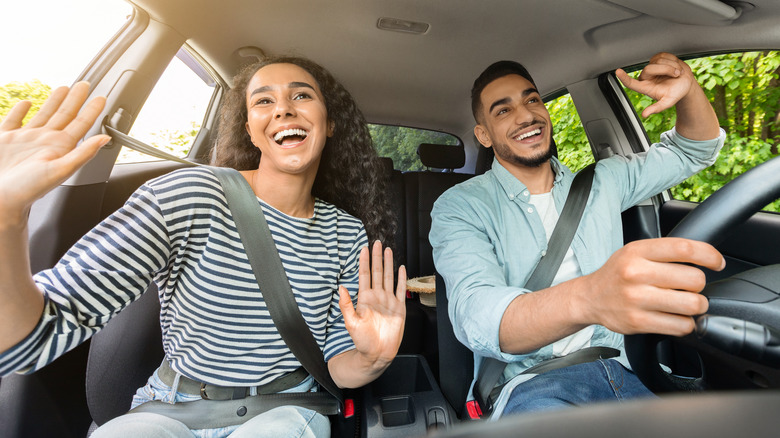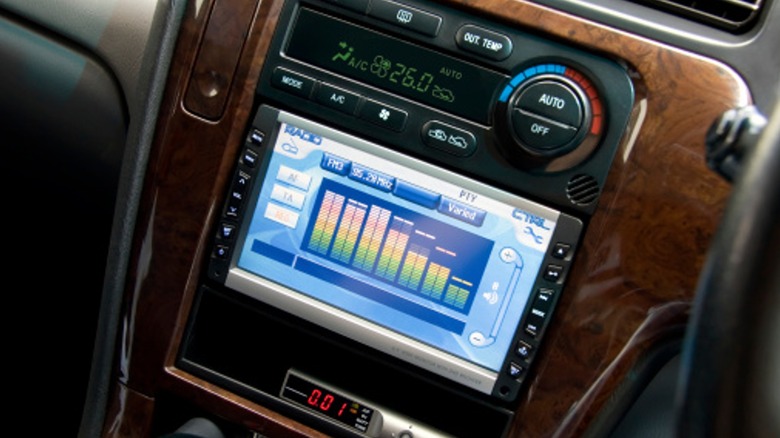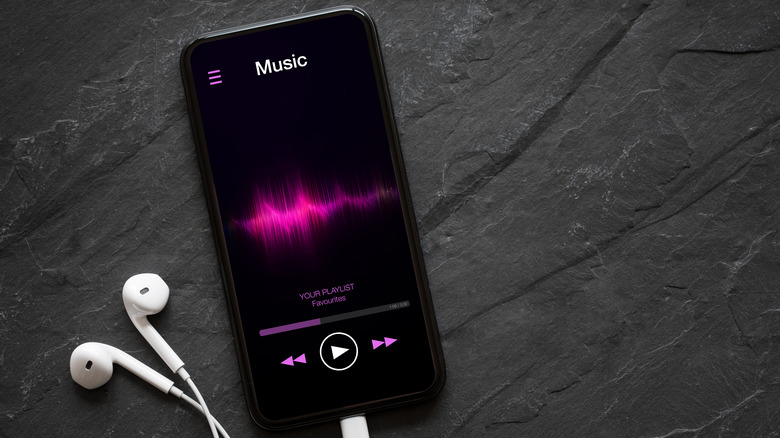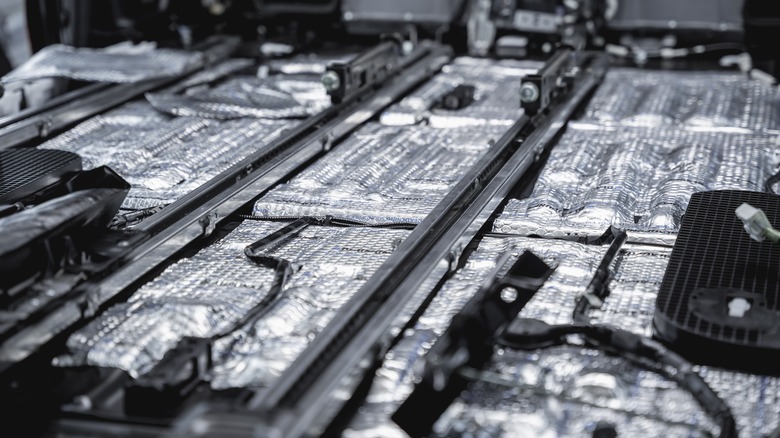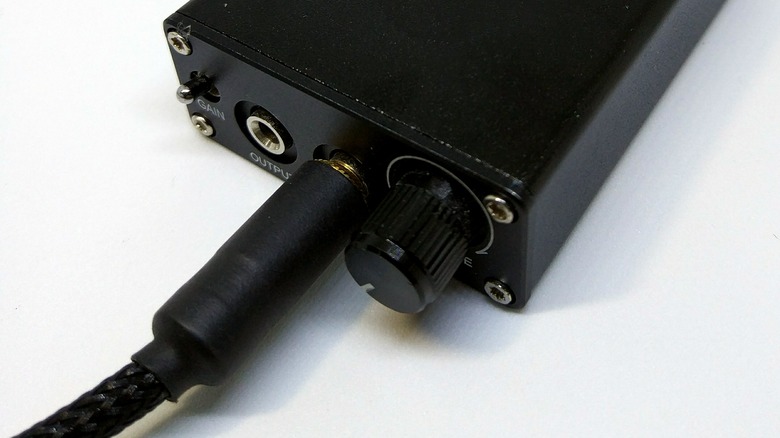5 Simple Tips For Maximizing Audio Quality In Your Car
Second only to driving to places, of course, one of your car's most important purposes is to provide you with an environment for ideal music enjoyment. If you can't jam out to your favorite tunes in your car, then really, where can you? It's private, it's enclosed, and it helps pass the time — your car is truly the ideal music-listening setting.
All that said, as nice as listening to music in your car can be, it could always be nicer. Depending on the make, model, and age of your car, it may have certain idiosyncrasies that make it less conducive to proper music enjoyment — from tinny speakers to poor noise isolation. When it comes to improving the quality of the audio in your car, the obvious answer is to install new hardware like speakers and subwoofers, but this can be expensive and time-consuming and requires some specialized knowledge to do so safely.
In lieu of all that, there are a few tricks you can try to improve your travel listening experience that don't require you to completely disassemble your car, and won't break the bank.
Leave the equalizer equalized
For at least the last few decades, nearly all car stereos have featured a built-in equalizer of some sort. Some keep it as simple as a knob next to the radio tuner, while others have full digital settings that you can fine-tune. Either way, the point of the equalizer is to redistribute the bass and treble put out by your car's speakers to your personal preferences, or to match the music you're listening to.
However, messing with the equalizer can throw your music's balance out of whack. Yes, it's fun to turn the bass all the way up and shake every car in a twenty-foot radius with your music, but it's not ideal for actually listening to music. Cranking either the bass or treble up too high can reduce your overall audio quality, exposing imperfections in the music.
If you really overdo it on the bass, you could even blow out your speakers. If you want your music louder, just use the volume knob, and leave the equalizer properly equalized.
Use high-quality music
Not all music is created equal. We may be living in the age of digital music, but just because you've got an MP3 of your favorite song to play from your phone or portable MP3 player, that doesn't mean you have the best possible version of it. That was something that was lost in the transition from physical media: CDs usually offered the best possible quality, while a streamed MP3 is often compressed.
If the music you're listening to in your car sounds somewhat hollow and tinny, it's possible you're using an improperly compressed MP3 file. If you've got the option, you want to use either a minimally-compressed file or one with lossless audio. They're bigger in size, so you might not be able to cart as many around on a phone, but the tangible improvement in audio quality will make it hard to ever go back to the compressed stuff. You can also check the download quality from streaming services like Spotify to see what audio quality your offline songs default to when downloaded.
Dampen external noise
While your car may be an isolated environment, it's not usually a soundproof one. Your car absorbs all kinds of ambient noises from the road and your surroundings, from the distinctive rumble of the highway to the crunch of debris, while the sound from your speakers also leaks out the other way. All of this can heavily diminish the quality of your music, which is why you may want to employ a bit of noise reduction.
Special foam paneling can be installed in key locations around your car to dampen or deaden ambient noise coming from the road, isolating the sound within the car and ensuring you properly experience your music in its entirety. Many luxury automakers employ this technique when designing cars to make for an overall quieter ride.
While installing this foam does require a bit of tinkering — as you need to remove certain surface materials like the panels on your door or the carpet on the floor to attach it — it's still a relatively easy process. Just take the surface off, slap the foam on, and stick the surface back on. However, in comparison to the other tips on this list, this step may be more involved depending on what vehicle you drive.
Use the USB port
Modern advancements in audio streaming technology have provided a myriad of ways to get your music from your portable devices to your car's stereo. The most common option is a Bluetooth connection, sending your music wirelessly from your phone to a car's built-in (or external) Bluetooth receiver.
However, streaming music in this way can reduce the fidelity somewhat. Some cars also have an AUX port that you can plug a phone into, the same way you would a pair of wired headphones, but this has the same problem — not taking full advantage of the car's audio capabilities.
For the best possible transmission of music from device to car, you should use a car's built-in USB port, if it has one. Connecting your device to your car in this way provides the most steady link possible, ensuring nothing is lost in the waves like it occasionally is with a Bluetooth connection. Plus, as an added bonus, it charges your phone.
Use a portable DAC
While modern cars are outfitted to play digital music, that doesn't mean that's something they can all do natively. Many cars are outfitted with a piece of technology called a DAC, or a "digital-analog converter." This component takes the digital information that your music is stored as, and converts it into something that your car's speakers can actually parse and play, i.e. audio.
Most cars have a DAC built-in, but if your car's on the older side, it may not have one — which means you won't be able to connect a device via a hard USB connection. In this case, you can use a portable DAC to create a similar connection of similarly high quality. All you need is a device that can connect via USB, as well as an AUX port in your car. Plug your device into the portable DAC, plug the portable DAC into the car, and you've got high-quality music pumping out.
